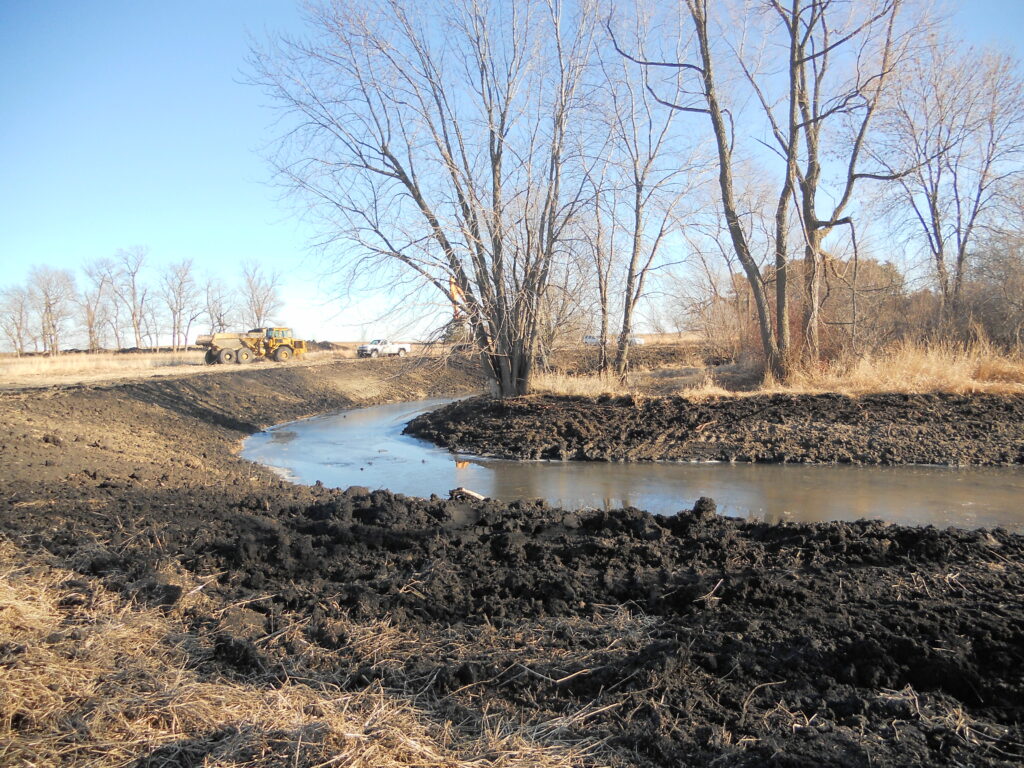Multi-purpose oxbow
An oxbow is an abandoned stream meander which provides valuable ecosystem services including wildlife habitat, flood water storage, and nutrient processing. A multi-purpose oxbow is designed with the intent of being shallow enough to remove nitrogen, but deep enough to ensure that fish species can over-winter in its pool.

Excavation of multi-purpose oxbowPhoto courtesy of Iowa TNCAerial view of multi-purpose oxbow restorationPhoto courtesy of Iowa TNCMulti-purpose oxbow shortly after restorationMulti-purpose oxbow revegetated
Location
Multi-purpose oxbows are located near a stream and generally are in marginal land that is not in crop production. They need to be paired with the discharge of a tile line to remove a significant amount of nitrogen as oxbows depending on flood-pulses often do not have enough of a source of nitrogen to remove a significant amount. The oxbows need to be in the floodplain in order to connect to the stream on a 1 to 2 year interval. Connecting to the stream allows fish to move in and out of the oxbow.
Footprint
The multi-purpose oxbows are sized based on the size of the historic oxbow. To maximize nitrate reduction the pool size should follow the recommendations of 1-2% pool to drainage area that constructed wetlands follow. To minimize predatory fish presence, oxbow pools larger than 0.5 acres should be broken into smaller cells.
Performance
Nitrate loads reductions of 42% have been recorded with multi-purpose oxbows. The larger the pool area compared to the drainage area generally leads to higher performance.
Economics
$
8000
Average installation costs range from $10,000-$12,500
$
1
Practice cost per pound of N removed based on data from a single site
